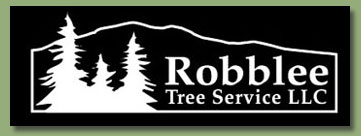FAQ about our NH Tree Services
1. What does the term arboriculture mean?
Arboriculture is the art, science, technology, and business of tree care and is practiced by Arborists that are trained to promote tree health, discern tree problems, and take the correct steps to correct these issues.
2. Why should I hire an arborist to care for the trees on my property?
Studies published in the Journal of Arboriculture have shown that it is actually far more cost effective to regularly prune and care for your trees than neglect them. Trees can increase the value of your property up to 25% if properly cared for. A tree's value is based on its location, species, and condition. The Council of Tree and Landscape Appraisers (CTLA) produces a guide to tree and plant appraisal, teaching real estate appraisers how to assess the value of trees.
3. What should I look for when hiring a tree care company?
Ask for copies of current, valid certificates of liability insurance and workers compensation insurance. Ask for local references. Get a detailed written estimate for the services and cost of your tree work.
Be wary of companies or individuals who do the following: solicit work door-to door, demand payment in advance, advertise topping and/or low prices, start work without a written estimate, cannot produce a valid certificate of insurance.
4. How much does it cost to cut down a tree?
This is the number one question we hear as a tree care company: COST. It is impossible to price a tree removal or pruning job over the phone or without viewing the tree. Every tree and location is different and the cost to remove or prune a tree is based on various factors.
Price is based on the size of the tree, the method of removal (whether by crane, bucket or climbing), the location of the tree and its accessibility, and safety factors such as electrical lines nearby or trees that may be over a house. We provide estimates free of charge so that we can meet each client and survey the tree(s) location. We will provide you with tree health information, hazard assessment, and answer all your questions. We will then fax or mail you a written estimate for the work requested within five business days.
5. How long does it take to get an estimate?
Usually one to three days. We can often look at your work even if you are not home. If you prefer to meet with us in person, we can set up a time that meets your schedule. Most of our estimates are done in the early morning, late afternoon, or on weekends. A written estimate will be faxed or mailed to you in five business days.
6. How soon can my tree work be completed?
After confirmation of your written estimate, you will be placed on our schedule on a first-come, first-served basis. We work through the winter, which is often a slower time for us. Winter is the perfect time for many tree removals since the ground is frozen and there is less chance of harming ground cover. In the winter, jobs are usually completed in one to two weeks. The spring and summer are our busiest time of year so we do our best to complete jobs within four weeks time.
We offer 24-hour emergency/storm damage care. We will immediately respond to all storm damage calls and offer assistance. We work with insurance companies to help you get trees and limbs off of your house as quickly as possible. Remember it is always advised to take pictures of storm damage before work is performed.
Arborist Work in New Hampshire

7. Why should I prune my trees?
The main reasons for pruning ornamental and shade trees include safety, health, and aesthetics. In addition, proper tree pruning can be used to stimulate fruit production and increase the value of timber.
Pruning for safety involves removing branches that could fall and cause injury or property damage. Pruning for health involves removing diseased or insect-infested wood, thinning the crown to increase airflow and reduce some pest problems. Pruning can best be used to encourage trees to develop strong structures and reduce the likelihood of damage during severe weather.
8. When should I prune my trees?
Conifers can be pruned any time of year, but pruning during the dormant season may minimize sap and resin flow from cut branches. Hardwood trees and shrubs without showy flowers should be pruned in the dormant season to easily visualize the structure of the tree, to maximize wound closure, reduce the chance of spreading disease, and to discourage sap flow. Trees and shrubs that flower in early spring such as dogwood should be pruned immediately after flowering. Trees and shrubs that flower in the summer and fall should be pruned during their dormant season. Dead branches can be removed any time of year.
9. Why should I have my tree stumps ground? What is a stump grinder?
A stump grinder is a machine that has a cutter wheel specifically manufactured to grind a stump and its root flares into a mulch-like fiber. Typically they penetrate about 8" below grade. The most obvious benefits to stump grinding are:
- Aesthetics- stumps are unsightly
- Utilization- removing a stump will allow you to use the space again
- Safety- no more tripping over the stump
- Maintenance-you won’t have to mow around it anymore
Alternatives to stump grinding are having stumps dug out. Digging up stumps is expensive and leaves you with a large hole to fill in and a big stump to dispose of.
10. How much does it cost to have a tree stump ground?
Price is dependent on size, species, and access. Please call us for a free estimate.
